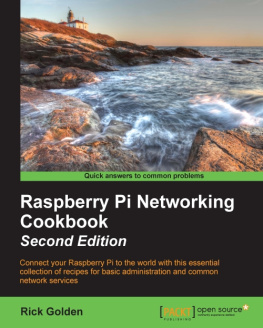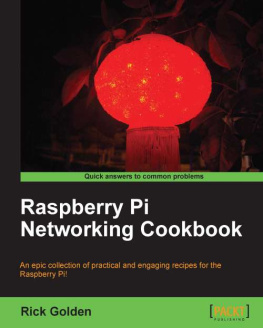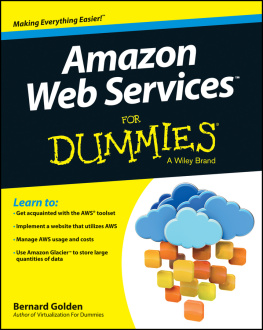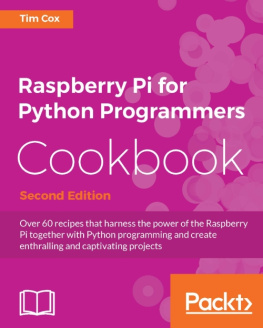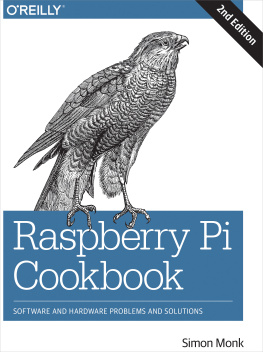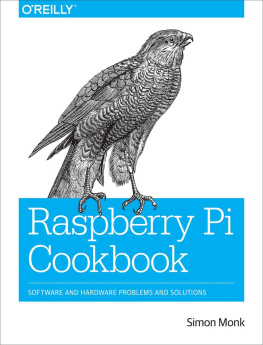All rights reserved. No part of this book may be reproduced, stored in a retrieval system, or transmitted in any form or by any means, without the prior written permission of the publisher, except in the case of brief quotations embedded in critical articles or reviews.
Every effort has been made in the preparation of this book to ensure the accuracy of the information presented. However, the information contained in this book is sold without warranty, either express or implied. Neither the author, nor Packt Publishing, and its dealers and distributors will be held liable for any damages caused or alleged to be caused directly or indirectly by this book.
Packt Publishing has endeavored to provide trademark information about all of the companies and products mentioned in this book by the appropriate use of capitals. However, Packt Publishing cannot guarantee the accuracy of this information.
Published by Packt Publishing Ltd.
Birmingham B3 2PB, UK.
Credits
Author
Rick Golden
Reviewers
Stefan Pietzonke
Werner Ziegelwanger
Acquisition Editor
Vivek Anantharaman
Content Development Editor
Arshiya Ayaz Umer
Technical Editors
Mohit Hassija
Edwin Moses
Copy Editors
Vedangi Narvekar
Jonathan Todd
Project Coordinator
Shipra Chawhan
Proofreader
Safis Editing
Indexer
Priya Sane
Production Coordinator
Shantanu N. Zagade
Cover Work
Shantanu N. Zagade
About the Author
Rick Golden , in the summer of 1972, sat in the computer lab at SUNY Fredonia and completed his first CAI tutorial on programming in APL. He was 9 years old then.
He has been programming computers for over 40 years. He has designed and developed a multitude of projects, from low-level graphics and database drivers to large-volume e-commerce platforms.
At work, Rick is currently focused on developing software to improve healthcare by mining petabytes of healthcare claims to find opportunities to improve healthcare coordination. After work, Rick teaches 10-14 year olds how to program using Raspberry Pi computers.
I would like to thank my dad for giving me the opportunity to learn programming at such a young age, which was unheard of in the 1970s. His wisdom, patience, and faith in my programming abilities has encouraged me to become the man that I am today.
I would also like to thank my wife and family for supporting me during the many hours that I spent working on this book. Without their support, this book would not have been written.
Finally, I would like to thank Packt Publishing for giving me the opportunity to update this book and my editor, Arshiya Umer, for keeping me focused on my deadlines. Without her help and encouragement, this book would not have been published.
About the Reviewers
Stefan Pietzonke grew up in a village and wrote his first computer program at the age of 14. His first computer was an Amiga 500. He learned to program in Amiga BASIC. Now, he mostly writes programs in the C/C++ language.
He developed his own virtual machine called "Nano". The bytecode for the Nano VM can be created by using his assembler or compiler.
He also likes to conduct hardware projects. He built a robot from a computer mouse case. This robot is autonomous, drives around, and seeks light.
He has a blog (http://midnight-koder.net/wordpress/) about his software and hardware projects.
I want to thank my family for supporting me.
Werner Ziegelwanger studied game engineering and simulation and got his master's degree in 2011. His master's thesis was published with Terrain Rendering with Geometry Clipmaps for Games as the title. The publisher was Diplomica Verlag. His hobbies are programming, games, and all kinds of technical gadgets.
He worked as a self-employed programmer for some years and mainly did web projects. At that time, he started his own blog (http://developer-blog.net), which is about the Raspberry Pi, Linux, and open source.
Since 2013, Werner has worked as a Magento developer and the head of programming at mStage GmbH, an e-commerce company that is focused on Magento.
www.PacktPub.com
Support files, eBooks, discount offers, and more
For support files and downloads related to your book, please visit www.PacktPub.com.
Did you know that Packt offers eBook versions of every book published, with PDF and ePub files available? You can upgrade to the eBook version at > for more details.
At www.PacktPub.com, you can also read a collection of free technical articles, sign up for a range of free newsletters and receive exclusive discounts and offers on Packt books and eBooks.
https://www2.packtpub.com/books/subscription/packtlib
Do you need instant solutions to your IT questions? PacktLib is Packt's online digital book library. Here, you can search, access, and read Packt's entire library of books.
Why Subscribe?
- Fully searchable across every book published by Packt
- Copy and paste, print, and bookmark content
- On demand and accessible via a web browser
Free Access for Packt account holders
If you have an account with Packt at www.PacktPub.com, you can use this to access PacktLib today and view 9 entirely free books. Simply use your login credentials for immediate access.
Preface
A Raspberry Pi 2, with its 900MHz quad-core processor, has more processing power than a network server from the late-1990s. Created as an educational tool to inspire the next generation of programmers, the Raspberry Pi is also an excellent network server. It can be used to share files, host websites, create Internet access points, and analyze network traffic. Multiple Raspberry Pis can be clustered to create a single, highly available, and fault-tolerant super computer. This book shows you how.
The Raspberry Pi Foundation recognized that computers had become so expensive and arcane that programming experimentation on them had to be forbidden by parents . The parental restrictions on using computers had created a year-on-year decline in the numbers and skills levels of the A Level students applying to read Computer Science . So, the Foundation set out to create a computer that was "affordable, and powerful enough to provide excellent multimedia, a feature we felt would make the board desirable to kids who wouldn't initially be interested in a purely programming-oriented device".
2 million Raspberry Pis were sold in the first two years of its release, which was not limited to educators and school children. Hobbyists were also excited to use the inexpensive Linux-based computer in their projects. In February 2015, the quad-core Raspberry Pi 2 was released with significantly more power and memory than the original, which was more than enough memory and power for many typical server applications.

